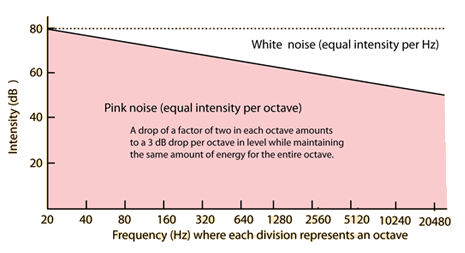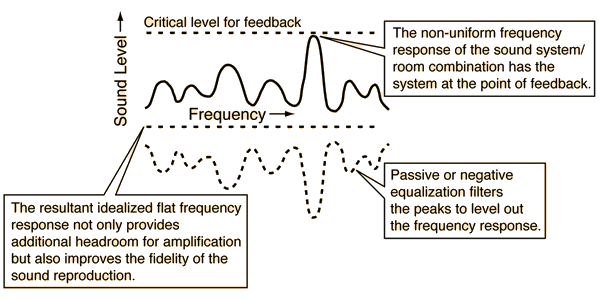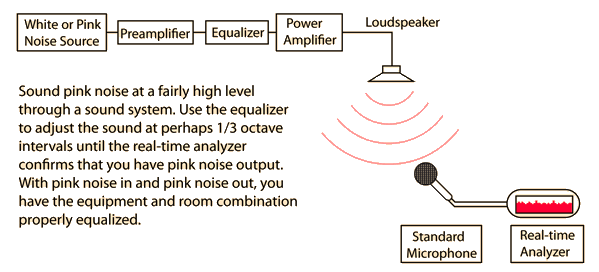Pink Noise
|
Pink noise, rather than white noise, is often the choice for testing and equalizing rooms and auditoriums. Broad-band noise signals are desirable for such testing. |  |
Whereas white noise is defined as sound with equal power per Hz in frequency, pink noise is filtered to give equal power per octave or equal power per 1/3 octave. Since the number of Hz in each successive octave increases by two, this means the power of pink noise per Hz of bandwidth decreases by a factor of two or 3 decibels per octave.
Since pink noise has relatively more bass than white noise, it sounds more like the roar of a waterfall than like the higher hissing sound of white noise.
When pink noise is chosen for equalizing auditoriums, real-time analyzers can be set up so that they display a straight horizontal line when they receive pink noise. With pink noise input to the sound system, the response curve can be adjusted to produce pink noise in the auditorium as measured by the real-time analyzer. This provides optimum fidelity as well as increases the potential acoustic gain of the sound amplification system.
 | With pink noise, the intensity is filtered to drop 30 dB over the 10 octave audible frequency range. |
The difference between pink noise and white noise is exaggerated in the top illustration by the process of making the vertical axis linear with intensity. The reason is that the ear is definitely not linear in its response to sound. The sound intensity of pink noise drops by a factor of 1000 over the audible frequency range, and that sounds very drastic. That drop should be considered in light of the "rule of thumb" for loudness perception: the fact that dropping the sound intensity by a factor of 10 or 10dB results in a sound that is perceived to be half as loud to the human ear. If each 10dB of drop results in a sound half as loud, then a 30dB drop will result in a sound perceived as 1/8 as loud - significantly less, to be sure, but not as drastic as the factor of 1/1000 in intensity would imply.
|
Index
Sound reproduction concepts |



